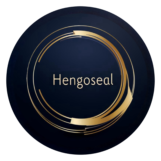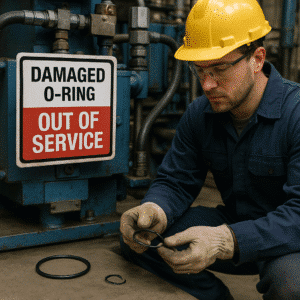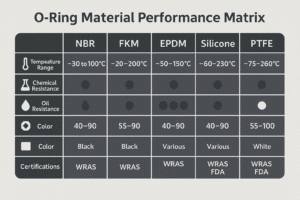If you’re confused between IDU and ODU seals for your hydraulic system, you’re not alone. These symmetrical piston seals are easy to mix up—but they serve different purposes.
IDU and ODU seals are double-acting piston seals, both widely used in high-performance hydraulic cylinders. But understanding their structure and function is key to choosing the right one in 2025.
Let’s break down the core differences and help you make the best selection.
What is an IDU hydraulic seal?
An IDU seal is a symmetrical piston seal designed for double-acting hydraulic cylinders.
It consists of a sealing element (usually made of NBR, PU, or FKM) and two support rings that prevent extrusion. IDU seals are ideal for medium-to-high pressure systems with alternating motion.

Their symmetry allows for easy installation without worrying about orientation. If your system requires a balanced sealing load in both directions, the IDU hydraulic seal is a smart option.
What is an ODU hydraulic seal?
ODU seals are also symmetrical double-acting piston seals—but typically used when higher extrusion resistance is needed.
They feature a slightly stiffer profile and are preferred in heavy-duty applications like hydraulic presses, steelworks, or construction cylinders.
Compared to IDU seals, ODU designs can handle more aggressive pressure spikes. They are often selected for rugged environments or large-diameter pistons.
Need help deciding? Compare them in the table below.
What’s the difference between IDU and ODU seals?
| Özellik | IDU Seal | ODU Seal |
|---|---|---|
| Basınç Direnci | Up to 30 MPa | Up to 40 MPa |
| Extrusion Resistance | Ilıman | Yüksek |
| Başvuru | General cylinders | Heavy-duty, large bore |
| Material Flexibility | Yüksek | Ilıman |
| Kurulum Kolaylığı | Simetrik | Simetrik |

Both seals are available in customized rubber options if you need non-standard grooves or special media resistance.
How to choose between IDU and ODU piston seals?
Ask yourself:
- What pressure range will the cylinder operate in?
- Will the piston face frequent reversals or high shock loads?
- Is extrusion a risk due to large clearances or groove wear?
If your system is compact and standard, an IDU seal is sufficient. But if you’re dealing with long strokes, wide tolerances, or sudden load spikes, choose ODU.
In mobile machinery or excavator cylinders, combining KDAS buffer seals with ODU can significantly reduce wear and maintenance cost.
Where are IDU and ODU seals typically used?
| Mühür Tipi | Ortak Uygulamalar |
|---|---|
| İç ünite | Agricultural cylinders, forklifts, presses |
| ODU | Steel equipment, cranes, large pistons |
| İkisi birden | Injection molding machines, industrial hydraulics |
At Hengoseal, we stock both IDU/ODU piston seals in standard sizes and offer OEM-matching service for legacy cylinders.
Çözüm
Choosing between IDU and ODU seals depends on your pressure, stroke, and system demands. Both offer excellent double-acting sealing—but the details make all the difference.
Request the perfect piston seal for your system
📩 Mail:[email protected]
📞WhatsApp:+86 17622979498
Related topic
- IDU / ODU Piston Contası | Çift Etkili Simetrik Hidrolik Conta
- KDAS Compact Seal | Buffer Seal for High-Pressure Cylinders
- Hidrolik Contalar Nasıl Seçilir ve Değiştirilir (Adım Adım)


